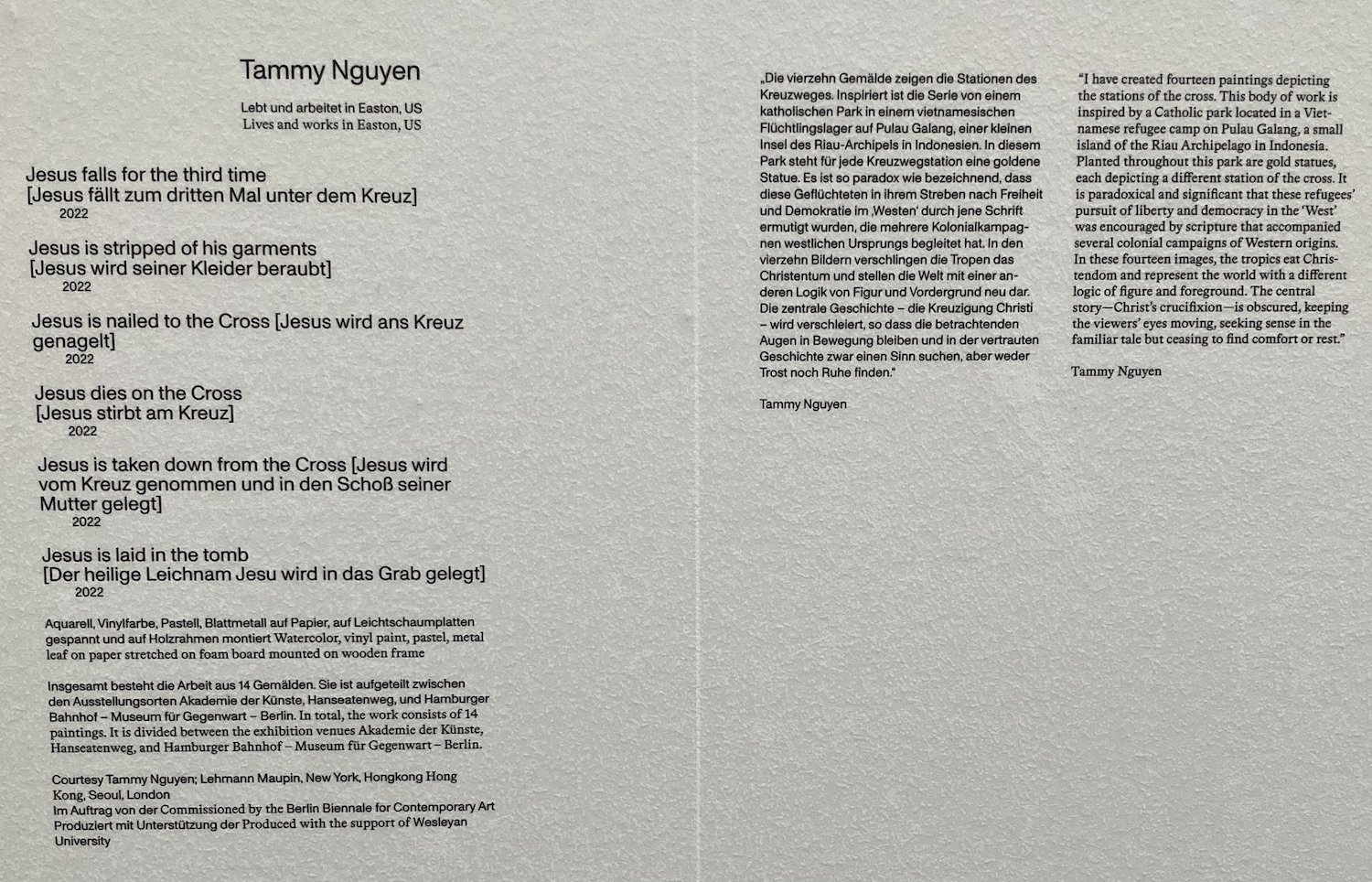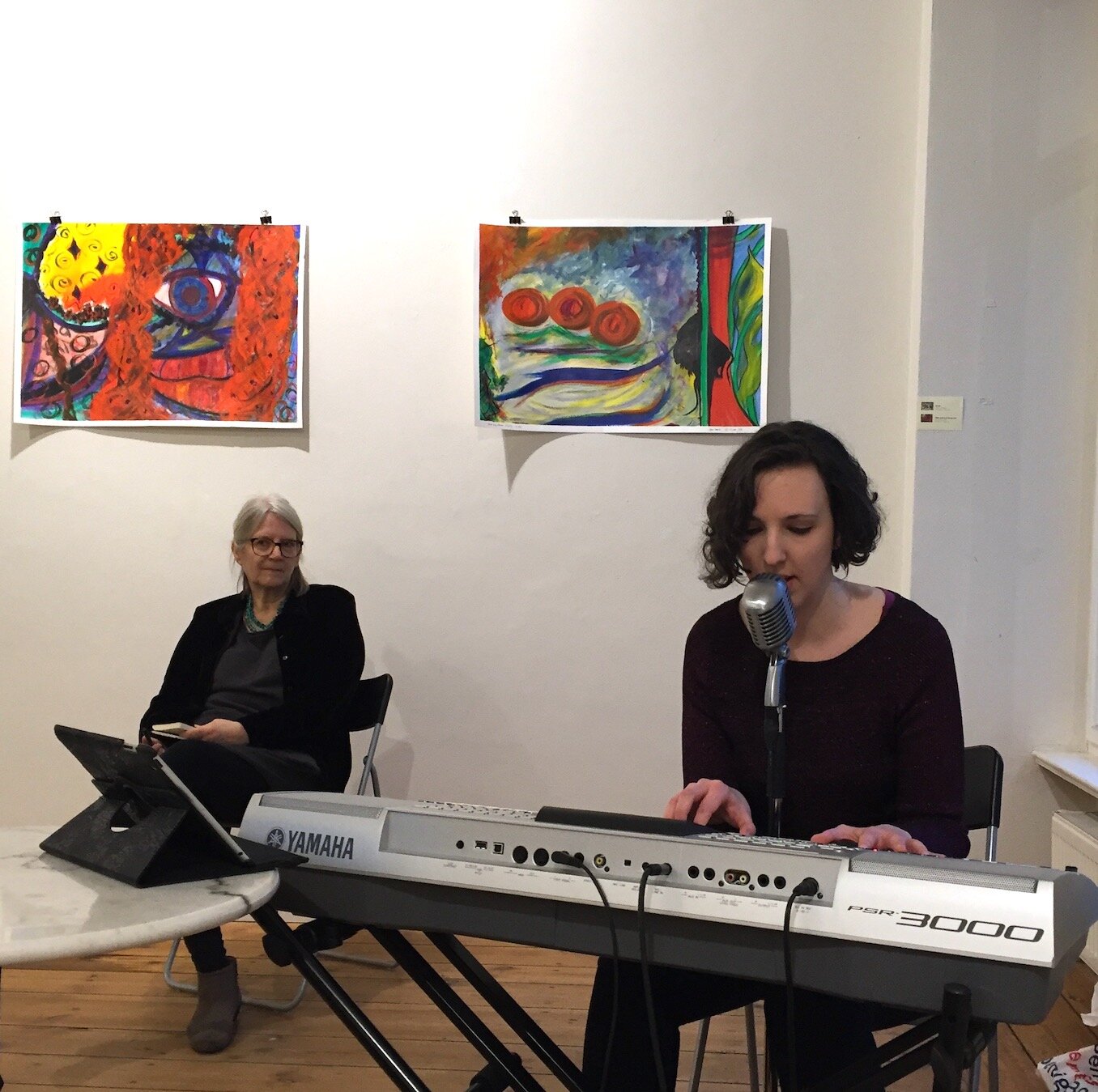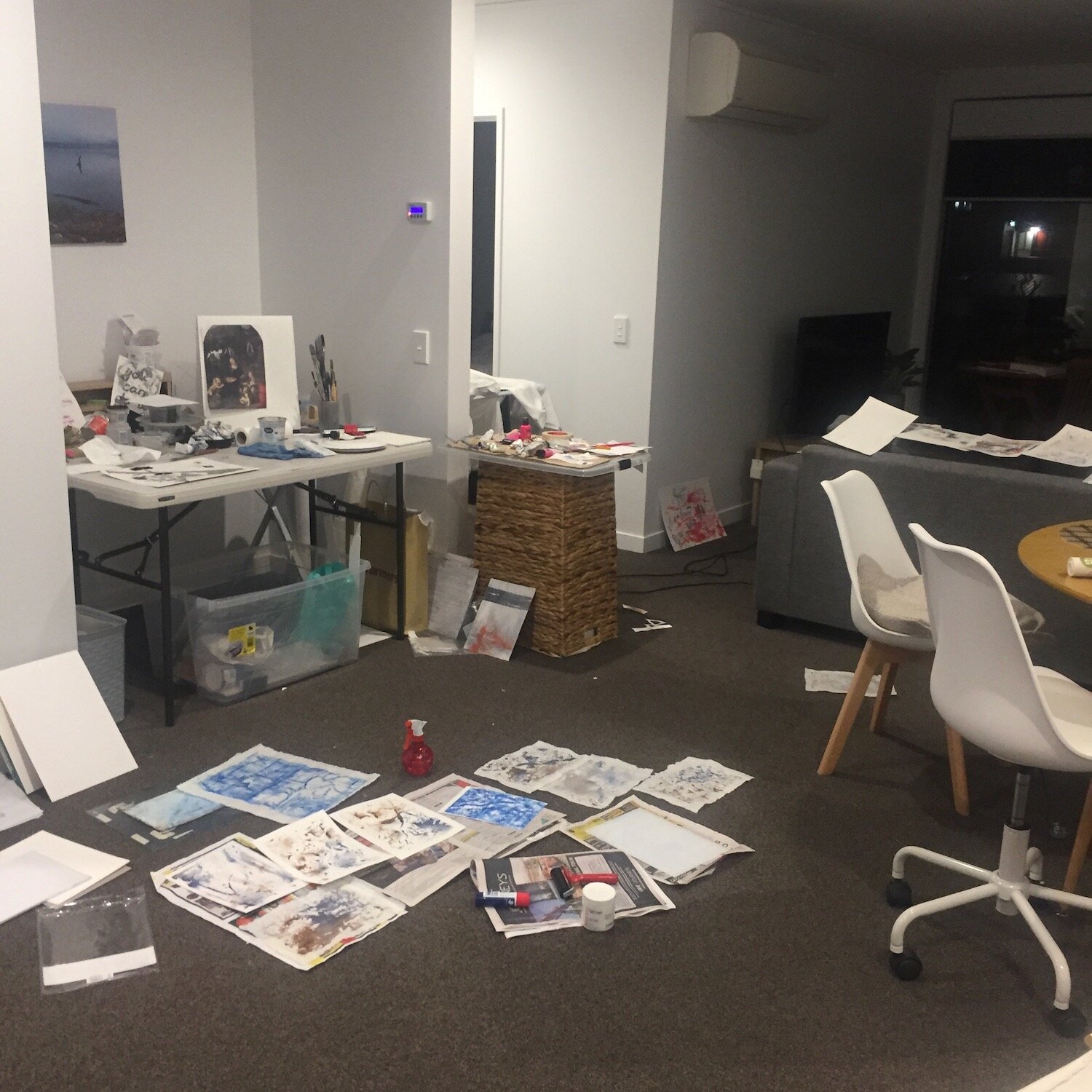Because I believe that the poetic power of dynamic painting and the quiet intensity of the painter’s studio can re-energise and re-connect people, back in 2018 I devised a version of an artist residency to offer to organisations. It was based on my earlier, rich experiences of a residency in Cinepoetics center for advanced film studies at the Free University Berlin.
Below: Studio Interludes at Cinepoetics, 2016-17
Central to my original vision was the ‘studio space’ to be embedded inside the organization. The artist would set up a studio in the organisation’s offices, and work there, connecting with people, learning about their work and responding to it through making art. The growing studio would offer a place to look, to notice, to connect, to explore. People would be invited into the space to experience the painting process and to make some art, alone and collaboratively, to breathe, to reflect and to refresh.
I was delighted that, back in 2021, it seemed possible to trial the vision with the Berghof Foundation in Berlin, working with people committed to peace building and conflict transformation. Coronavirus, of course, wrecked most of those plans. But it also opened alternative possibilities.
In this series of posts I reflect on what we managed to do instead, looking for insights and possibilities that may be useful in future.
















































































